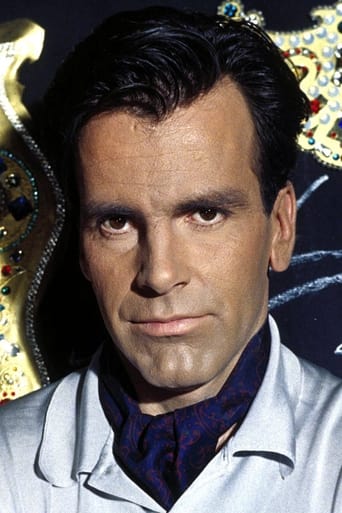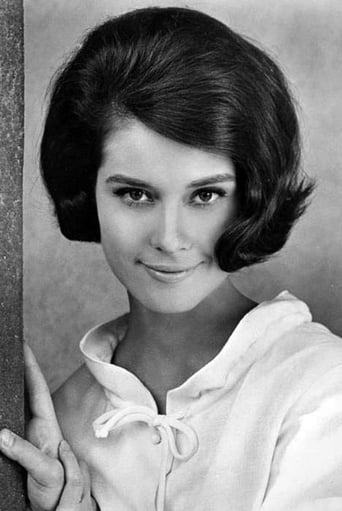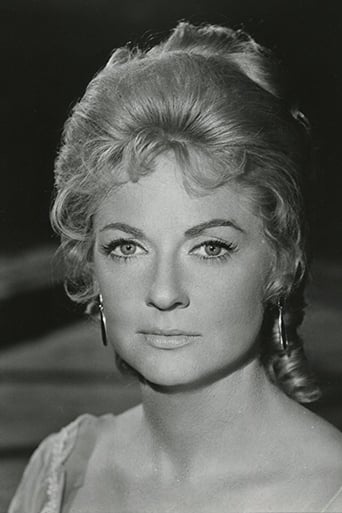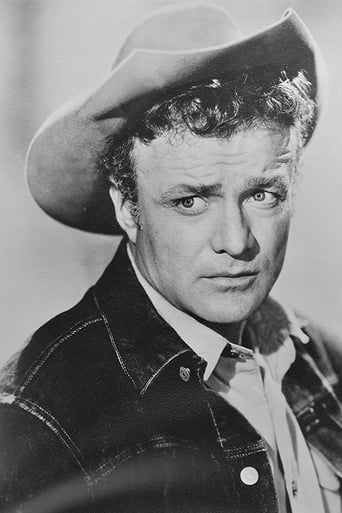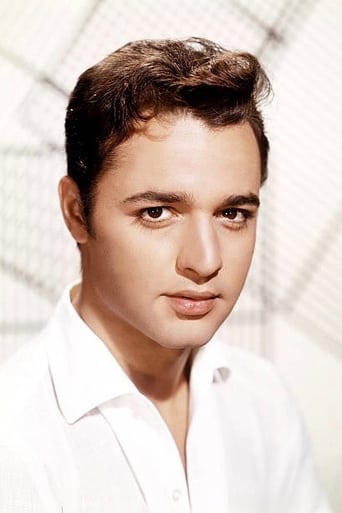Ceticultsot
Beautiful, moving film.
InformationRap
This is one of the few movies I've ever seen where the whole audience broke into spontaneous, loud applause a third of the way in.
Lidia Draper
Great example of an old-fashioned, pure-at-heart escapist event movie that doesn't pretend to be anything that it's not and has boat loads of fun being its own ludicrous self.
mdouglasfresno
This one's definitely a "mixed-bag"; a movie that wasn't quite sure what it wanted to be. Disaster epic? Musical? Psychological drama? Romance? Adventure? Comedy? The producers threw all these elements into "the old stew pot", gave it a brisk stir, and hoped for the best. For one thing, this movie was simply made at the wrong time -- this just wasn't "were it was at" for audiences in 1969; it looked badly dated and inconsequential. It would have fit far better among the B-picture adventure yarns that were being churned out in the 1950's. Yet unfortunately for the producers, it was too early to be part of the "disaster pic" cycle of the mid-Seventies (though they did re-release it under a new name at that time, maybe hoping to recoup their losses?).I don't know the whole story on the production, but it sounds like the producers were very anxious to get "into the can" all the special effects footage they could of volcano and tsunami, without any concept of how it was going to be pieced together. Apparently they started without anything approaching a finished script, and tried to tack together a story during the filming. Continuity is shaky, the subplots seem underdeveloped, so overall the movie has a sloppy, poorly-edited look. I have to wonder if much of it didn't end up on the cutting room floor. This slip-shod approach probably explains how a major motion picture release could contain in it's title such a glaring mistake in geography! The musical score, and especially Mack David's theme song, is lovely, but it's simply MUCH TOO "Sixties" for a movie set in the 1880's. On the whole, the acting is fairly solid. Diane Baker and Barbara Werle share duties in the romance department; unfortunately, Barbara's character "Charley" is a source of much unintended humor. Worst scene of the movie is where she sings and dances (and strips) around the stateroom she shares with Brian Keith. Was this supposed to be "seductive"? I recall being stupefied at this sudden and unexpected musical interlude; Brian Keith however just looks totally bored. The special effects are okay for their time, and there's enough adventure in this movie to at least make it watchable.
FilmFlaneur
A guilty pleasure. Krakatoa, East Of Java's principal claim to fame is its title, infamously and erroneously placing its subject on the wrong side of the island. Directed by Bernard Kowalski, whose rare non-TV credits include Attack Of The Giant Leeches (1959), and SSsssnake (1973), the film is probably his best, aided immensely as it is by some excellent widescreen cinematography, emphasised with convincing location shooting -facts rarely allowed for in usual criticisms of a film which was cut by almost 30 minutes for an American re-release. The special effects, largely achieved through miniatures and blue screen work, range from passable to excellent and even now, in this era of eye watering CGI, there's still a fascination is seeing how well such a catastrophe was portrayed. The production design, by the veteran Eugène Lourié no less, is worth a discussion on its own.In the face of this impending volcanic disaster is a nicely mixed group and one would expect plenty of steamy drama to be played out beneath sweltering decks. But the main problem the narrative is that, despite some promising elements, the audience has little empathy with the main group. Despite the long running time of the film (130 minutes in the full version), they remain too fragmented, and dramatic interest is often discharged too rapidly. But that's part of the fun, seeing how various matters are padded and dragged out between tantalising hints of the eruption to come. How some potential for real drama, like the love-hate relationship between father and son balloonists, or the latent sexuality of the Japanese women etc, is left to die by a unfocused script. For every wooden scene between between Hanson and Laura , one would dearly love more about the convict Dauzig's personal demons or his relationship with his comrades in chains below decks for instance, the resentful tension of which threatens to be every bit as violent as the island they are sailing towards.But there's some incidental fun to be had along the way: one thinks of Keith and Werle in their cabin early on for instance, where she serenades him with a song as unexpected as it is irrelevant. It's a shipboard relationship between a heavyweight has-been and a shop worn female recalling that between Ernest Borgnine and Shelly Winters in The Poseidon Adventure of three years later. Keith's addict-diver with the 'shot lungs' provides other of the film's whacked out highlights too, as when, high on his drug, he hallucinates and attacks one of the Japanese women. Eventually confined to a crate suspended over deck until he regains his senses, Connerly is a man who seems doomed from the moment we see him. A point-of-view shot through the wooden bars during his moment of trial, lensed as he swings helplessly back and forth, suggests a prison in which a condemned man finds himself. Such is typical of a film that has many such moments, those in which characters peer at a world fraught with challenge. Whether through eyepieces, between slats, out of portholes, from balloons and diving bells, down into holds packed full of convicts or steaming volcanic cauldrons, apprehensive observation and anticipation is the norm for those who ride the Batavia Queen. These moments aptly reflect back the concerns of an audience who, in this film more than others, have come principally to observe a promised spectacular.Such a visual motif is one of the few unifying elements in the film, other than the overarching expectation of an eruption. The overwhelming episodic nature of events is obvious, but at least it has the merit of making the film fairly diverse in content and, even in its full length version, time passes quickly enough in Krakatoa. On top of this, the concluding explosions and fireworks from the island aside, Kowalski does manage one or two effective scenes, such as the scenes in the runaway balloon, the near-comedy of which reminds one of the balloon antics in Those Magnificent Men In Their Flying Machines (1965), or the eerie sound effects caused by the nascent eruption (although one piece of eruption footage, conspicuously recycled, is a distraction). The simulation of audio effects one of the few times that the film actually reflects the subtle indications of such a massive event realistically as, for the rest of the film, the volcano is stereotyped into the usual 'burning mountaintop' image, set in mostly clear air at that, with the phenomenon of falling blankets of ash entirely overlooked. For some reason too, Krakatoa's eruption brings on a storm at sea - a nice easy, extra, touch of drama to be sure, although quite why volcanism should affect the weather is uncertain. Tossed and buffeted, Hanson's ship is a place of refuge amongst the impending devastation and, after dropping off one or two of the travellers who decide to sit out the expected tsunami on shore - a mistake in this situation, as any alert audience immediately realises - it faces the momentous tide alone. Like a similar wave that topples the aforementioned SS Poseidon, the one that comes up here seems to break mysteriously as it approaches the ship, but the outcome is never really in doubt. On shore, the results are worse, but reasonably well done, Kowalski's images suggesting something of a biblical deluge in scenes, which even the film's doubters still find impressive.In fact so much has been leading up to the grand finale, so many supporting stories established, that one wishes that Krakatoa would go on a little longer than it does, at least so that there was time to gauge the effect of such tumultuous effects on the key participants. Ultimately, what impresses most these days is the absence throughout of the earnestness that attends so many modern disaster movies. The result is a still enjoyable film, one both flawed and innocent at the same time.
rixrex
I have been waiting since 1969 to see this, since it wasn't available on tape, and finally saw it on DVD on widescreen TV, home theater sound, etc, to get as close to the movie theater experience as possible. Too bad, because while the spectacle of all the adventure and effects are grand, the acting, dialog and direction borders on insipid. The director, Kowalski, was interesting with his two 50's sci-fi horror flicks, he was and has been basically a TV director and it shows here. He never really uses the big screen, not to mention Cinerama, to it's potential. He doesn't use the great (like Sal Mineo) and good (like Brian Keith) actors to their full potential. The effects are nice enough, but the same shots are used too often. Where there should be build up of suspense, there's only tedium and passing the time, much like typical 70s network TV fare. The writing is uninspired and much of the dialog is weak. There's plenty of dramatic plot elements to bring together and hit us in the gut, such as the woefully unexplored relationship of Mineo and Jacquie Chan, and this would have been great with a director the caliber of David Lean or Robert Wise. The first 15 minutes are very good and made me think it would be as good as, say, The Sand Pebbles, but alas, no. In the hands of an inspired talent, I dare say it could have had several academy award nominations, including Brian Keith for supporting actor, and it could have run nearly 3 hours and still have been engrossing. Well, MGM wasn't up to snuff in 1968-69, and so this is what we got. Normally, I'd give a 6 to a film like this, but it gets 4 because of all of the wasted potential. Could be a good remake though!
pkreidenweis2
I saw this movie when I was a kid. I remembered more dramatic scenes of the eruption and tidal wave then seemed to appear in the movie version of the film. It was the beginning of my interest in earth sciences and natural wonders.I was truly disappointed with the film when I finally received it. I'd put the movie on order and waited a year for it, regretfully so. While waiting for the film to arrive, PBS viewed a documentary on Krakatoa that held my interest for hours and became irritated that I'd not received my movie. I tried looking for special scenes that would contain what I felt was missing, but to no avail. Vote 1 because you don't have a zero.

